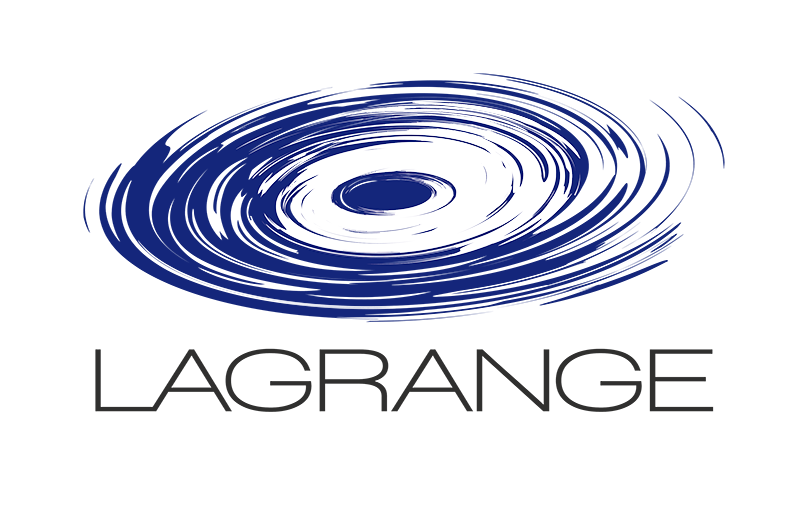The ISSP team
As a second-year engineering student at CESI, I am completing my apprenticeship within the SPICA team, where I have been involved in various software developments related to the instrument. During my first year, I worked on control-command systems and client-server communication, particularly for the replacement of the PDC modules and the implementation of new fiber injection modules. I then contributed to the development of data filtering processes for SPICA-VIS, based on telemetry data from the fringe-tracker. I am currently developing a signal simulator for MIRC-X. This tool is designed to test and improve the performance of SPICA-FT, with the aim of enabling longer exposure times and achieving higher magnitude observations with SPICA-VIS.

The primary focus of my thesis is to participate in an interferometric survey and catalogue the fundamental parameters of stars as part of the ISSP team. By the end of the thesis, I will have observed hundreds of stars, cataloguing the limb-darkened angular diameters and other fundamental parameters.
This work specifically aims to obtain direct limb darkening measurements for a large sample of dwarf and giant stars, spanning spectral types B through M, by utilizing interferometry. We will employ the CHARA/SPICA, CHARA/MIRCx and CHARA/MYSTIC interferometric instruments, which will operate in the R, H, and K bands. Accurate measurements of limb darkening and angular diameters will enable us to better determine stellar properties such as angular diameter, radius effective temperature (Teff), surface gravity (log g), and metallicity. This information is crucial for understanding stellar atmospheres and studying transiting exoplanets.
Additionally, I am developing a novel method that uses stellar atmosphere models to jointly interpret both spectroscopic and interferometric observations. This approach involves training one-dimensional stellar atmosphere models using an artificial neural network to analyze the combined data, leading to precise estimates of stellar parameters. I plan to extend this method to 3D models at the end of my PhD. This work contributes to the ESA/PLATO mission in collaboration with PLATO WP122.

The surface brightness color relation (SBCR) is an empirical and fundamental tool that is used to easily and directly determine the angular diameter of any star from its photometric measurements, usually in two bands, in the visible and the near-infrared.
At the same time, the SBCRs are also of high interest for the determination of the planet’s radius directly derived from the radius of stars hosting transiting exoplanets and, this relation is also widely used to derive the distances to the Large and Small Magellanic Clouds with a high precision.
In my work I perform interferometric observations with the SPICA instrument in the optical range and with MIRCX and MYSTIC interferometers in the infrared, in order to measure the angular diameters of about 800 stars over the whole HR diagram.
As responsible of the S04-SBCR program, the main goal is to recalibrate the SBC relation with a precision between 1-2% in order to: contribute with an independent tool to estimate the stellar radius for late-type stars in PLAnetary Transits and Oscillation (PLATO) space mission, derive and improve the distances to SMC and LMC to open a new road to Ho and, finally, study the impact of spectral type and class, as well as the impact of stellar activity on the SBCR.

I'm the PI and conductor of the ISSP project. As PI of the SPICA instrument installed on the CHARA Array at Mount Wilson, I'm also strongly involved in any of the technical developments we are doing for improving the performance and the quality of the data. Part of my activities is dedicated to the operation of the fringe tracker (for enabling longer exposure time) and on the adaptive optics systems together with the CHARA team (to enable the access to fainter targets). We are also currently working on improving the sensitivity by adding the correction of atmospheric refraction before the injection in the SPICA single mode fibers. On the data side, I'm working closely with the team for improving the reliability of our management tools (pipeline, database management). On the astrophysical aspects, I'm now leading the S01 subprogram on the exoplanet host stars. A new vision of the stellar parameters on these stars will permit unprecedented results on the planets themselves, when combining the interferometric measurements with photometric or spectroscopic follow up of such systems. As conductor of the project, I'm of course following all the different programs of the team.

My work within the ISSP project is focused on opening the possibility of image reconstruction combining R-, H- and K-band data from SPICA, MIRCx and MYSTIC, respectively. This feat needs the SPICA-FT fringe tracker to be operated routinely every night. Therefore, my task is twofold : First, I will contribute to the optimization and characterization of SPICA-FT. This specific task will contribute to the upgrade of the whole CHARA observatory; Second, I will take part in the imaging program of the ISSP, mainly for complex objects such as binaries, fast rotators or stars with environments for which a an angular diameter measurement is not enough to meet the scientific objectives of the program. Due to my experience in observing young stellar objects thanks to a combination of interferometry and spectropolarimetry, I also aim at bringing these objects into the scope of the future multi-chromatic imaging capability of the CHARA array, which could provide groundbreaking results in the understanding of the physical processes surrounding young stars.

My work consists in optimizing the performance of the twelve adaptive optics (AO) systems of the CHARA telescopes. Each one of the six telescopes is equipped with two AO devices, one for the atmospheric corrections and one for the compensation of the static aberrations.
Improving the performance of such complex AO systems is needed to enhance the performance of the SPICA instrument working in the visible wavelengths. Optimizating the AO implies several technical aspects, such as:
a) monitoring the AO performance over time by using concrete metrics (Strehl, encircled flux, AO telemetric data, seeing measurement) ;
b) estimating the AO settings (gains, exposure time, thresholds) to be used by the operators for different target magnitudes and seeing conditions ;
c) developping suitable AO software displays to facilitate the remote operations ;
d) managing some alignment issues, like AO reconstructors (day-time, on-sky or synthetic slope-to-actuator interaction matrix) and mis-registration (misalignment in between the wavefront sensor sub-pupils and the deformable mirror actuators of each AO system).
In complement, I will support the implementation of a new seeing monitor which will enable to correlate the seeing conditions with the AO performance. Finally, I provide night-time assistance during observations. I also contribute to the data analysis for the Interferometric Survey of Stellar Parameters (ISSP) project by combining the SPICA, MIRC-X and MYSTIC instruments.

Thesis
Asteroseismology is the study of the waves going through stars, allowing to decipher the interiors of stars. The wave frequencies indeed depends on the internal structure of stars therefore bringing to the surface informations on their interiors. This technique can also be used to determine the global characteristics of the stars like their mass and radius. In this project, I am responsible of the task S02 (main-sequence stars) and S03 (subgiant and red giant stars) which concerns low-mass asteroseismic target analysis. The objective is to offer a comparison between the interferometric data, able to obtain stellar angular diameters thus stellar radius with an estimation of the parallaxe, and asteroseismic data. The objective is to strengthen the radius determination we can obtain by asteroseismology and other photometric techniques and to assess the potential of interferometry in the improvement of stellar modelisation, therefore on the extraction of the stellar parameters.
The ISSP survey is managed with co-investigators considered as associate experts: Orlagh CREEVEY, Sebastien DEHEUVELS, Nicolas NARDETTO, Armando DOMICIANO, Markus WITTKOWSKI, and Karine PERRAUT
Direct collaborators
The CHARA group at Mount Wilson and Atlanta: Doug, Gail, Theo, Narsi, Nils, Chris, Nic, Rob, Karolina, Craig, Victor, Norm, Olli, Becky.
The SPICA group at OCA: Philippe, Julien, Christophe, Daniel, Fred, Alain, Isabelle and past members (Sylvain, Fatmé, Stéphane)
The JMMC group at OSUG, with a special tag for Guillaume and Laurent
Past members

Thesis
As a research engineer, I have contributed to several major international programs led by ESA, NASA, CNES, and ESO, including SoHO, COROT, Kepler, PICARD, and VLTI/MATISSE, focusing on solar and stellar physics. Since 2021, as a member of the ERC-funded ISSP survey team, I have been responsible for managing the entire SPICA data processing workflow, from metadata to L0, L1, and L2 levels. This survey is based on the SPICA-DB catalog, which contains all the necessary information about the stars to be observed. This catalog is at the heart of the two main graphical interfaces developed for the ISSP survey: the Night Scheduling Software (NSS), which is used to prepare the interferometric observations with the CHARA array, and the Data Feeding and Querying Software (DFQS) designed to manage the survey, while updating the SPICA-DB catalog accordingly. These tools, built in Python, are linked to those developed at the Jean-Marie Mariotti Center (JMMC) through the interoperability of VO tables. Moreover, the data workflow for the collected observations is automated within the end-of-night procedures, including the archiving of the SPICA data in the Optical interferometry Database (OiDb). Several other catalogs are associated with SPICA and are updated with new observations, such as the follow-up of the ISSP survey and the scientific catalogs, all of which are essential for the overall management of the project. I am also working closely with the scientific team on the implementation of new functionalities in the existing Python tools, as well as with the Pôle SNO Numérique at OCA to develop a new web service to manage the SPICA/ISSP survey.




